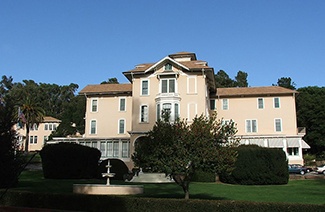其实无论是老
Passage 1 is by Dorothy Sayers; Passage 2 is adapted from a work by Raymond Chandler.
Passage 1
The detective story does not and cannot attain the
loftiest level of literary achievement. Though it deals
with the most desperate effects of rage, jealousy, and
revenge, it rarely touches the heights and depths of
human passion. It presents us with an accomplished Line5
fact, and looks upon death with a dispassionate eye. It
does not show us the inner workings of the murderer's
mind—it must not, for the identity of the criminal is
hidden until the end of the book. The most successful
writers are those who contrive to keep the story running Line10
from beginning to end upon the same emotional level,
and it is better to err in the direction of too little feeling
than too much.
Passage 2
I think what was really gnawing at Dorothy Sayers in
her critique of the detective story was the realization that Line15
her kind of detective story was an arid formula unable to
satisfy its own implications. If the story started to be about
real people, they soon had to do unreal things to conform
to the artificial pattern required by the plot. When they did
unreal things, they ceased to be real themselves. Sayers' Line20
own stories show that she was annoyed by this triteness.
Yet she would not give her characters their heads and let
them make their own mystery.
1. Which best describes the relationship between the two passages?
A. Passage 1 explains the evolution of a genre, while Passage 2 challenges the notion of a distinct genre.
B. Passage 1 discusses the constraints of a genre, while Passage 2 contends that many of these constraints are self-imposed.
C. Passage 1 celebrates a genre, while Passage 2 points out its deficiencies.
D. Passage 1 explains the popularity of a genre, while Passage 2 questions its commercial success.
E. Passage 1 compares a genre unfavorably to other types of writing, while Passage 2 argues that the genre has unique features.
2. The author of Passage 2 would most likely respond to the statement in lines 4-5, Passage 1 ("it rarely . . . passion"), by
A. arguing that this approach limits the characters' development
B. denying that most writers of detective stories rely on formulas
C. agreeing that strong emotions are out of place in detective stories
D. conceding that great literature is seldom commercially successful
E. concurring that readers are primarily interested in plot
3. Which of the following characteristics of detective stories presented in Passage 1 would be LEAST likely to be attributed to the "pattern" mentioned in line 19, Passage 2 ?
A. "cannot attain the loftiest level of literary achievement" (lines 1-2)
B. "deals with the most desperate effects of rage, jealousy, and revenge" (lines 2-4)
C. "presents us with an accomplished fact" (lines 5-6)
D. "looks upon death with a dispassionate eye" (line 6)
E. "does not show us the inner workings of the murderer's mind" (lines 7-8)
4. Passage 1 suggests that Sayers would most likely respond to lines 17-20, Passage 2 ("If the story started . . . themselves"), by pointing out that
A. great writers seldom explore the range of human emotions
B. detective stories do not address the consequences of people's emotions
C. detective stories are driven by the plot, not by the characters
D. readers of detective stories prefer unrealistic situations
E. real people often act in ways that are unexpected
以上是小编为大家分享的“【真题】SAT历年真题(2010-2018)实时更新”资料,希望可以指导大家有效备考SAT。

















